As cyclists, we like to challenge ourselves.
The biggest challenges often come in the form of climbs, whether it’s around the corner from your house, or on a long ride far from home.
But what are the most challenging climbs in the world?
Now, this probably isn’t a question you’ve asked yourself unless you’re really trying to test your physical limits to the extreme. However, if that’s what you’re into, then there are many such climbs in the world that will challenge even the seasoned grimpeur.
When you think of the biggest climbs in the world, you may quite quickly think of the brutal alpine climbs that you see every year in the Grand Tours.
However, since the Alps aren’t actually the biggest of mountain ranges, there are many that dwarf even Alpe D’Huez, for example.
So, where might you find the toughest climbs in the world?
Let’s get started!
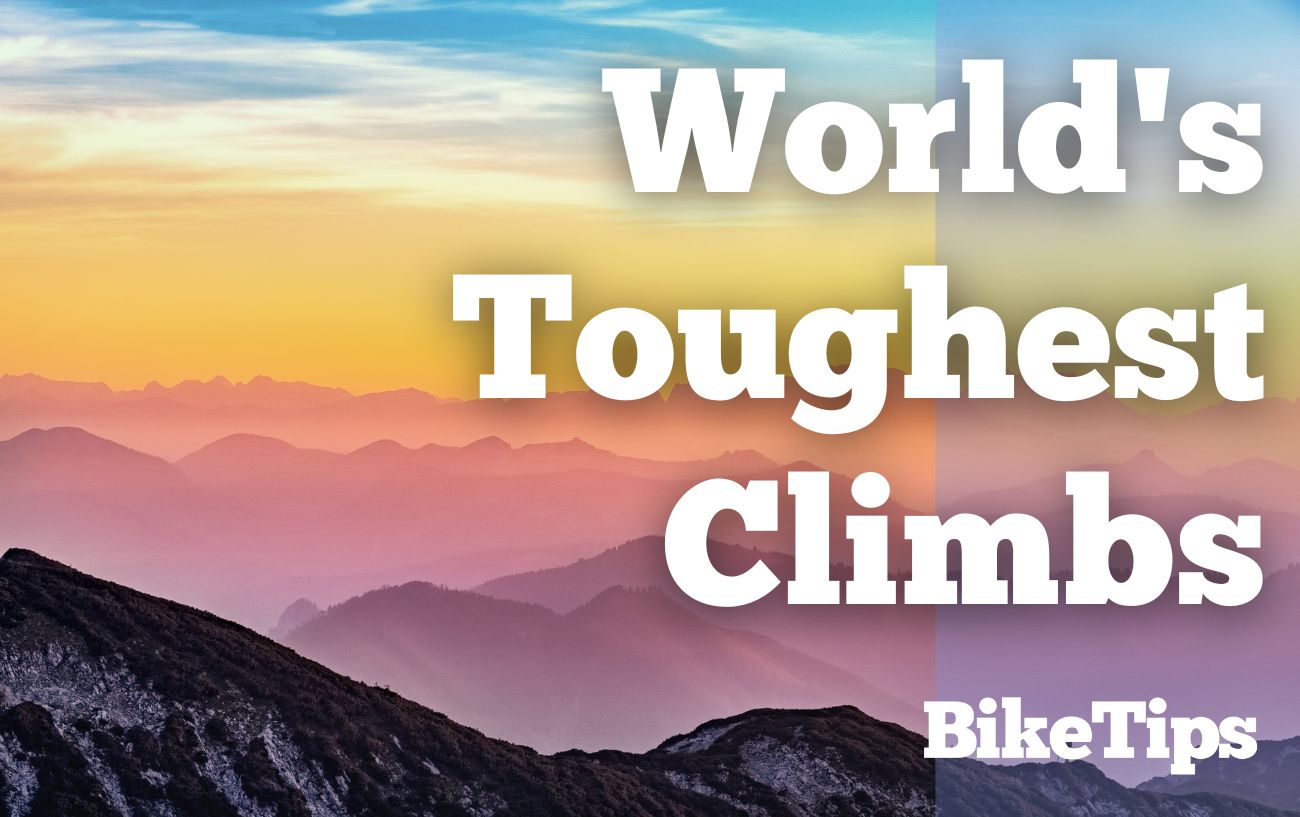
Wuling Pass, Taiwan
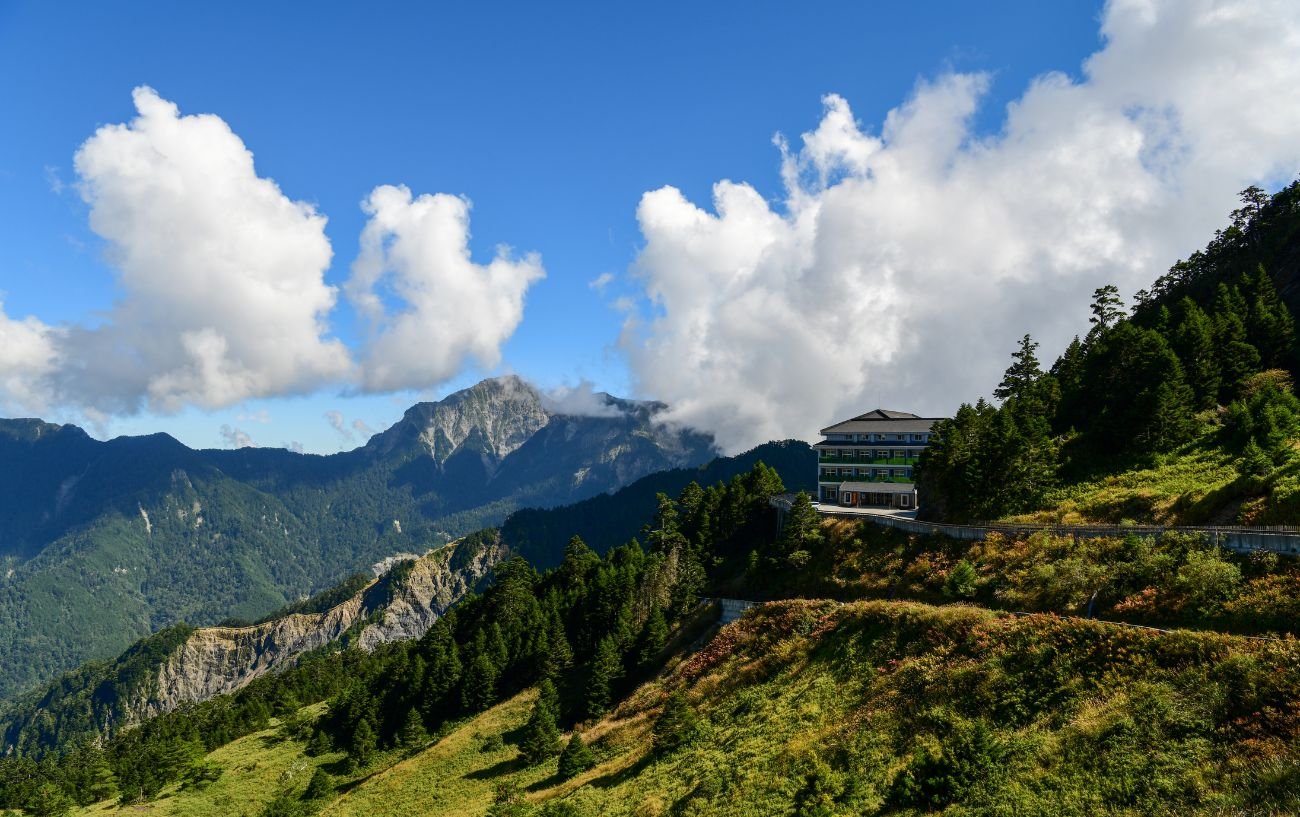
- Category: HC
- Distance: 103.7 km
- Elevation Gain: 3617 m
- Max Altitude: 3258 m
- Average Gradient: 3.1%
- Max Gradient: 15.0%
The Wuling Pass is a behemoth ascent from sea level at the beautiful coastal region of Hualien in Taiwan and ends at the lofty altitude of 3258 m at the top of Hehuanshen mountain.
One of the things that make this climb so challenging is that not only are you ascending over 3000 m in one go, but the climb lasts over 100 km.
Although it’s known for its difficulty, it also is home to some incredible scenery, passing through giant cliffs cascading into turquoise ocean, an incredible sub-tropical gorge, and all the way up through cloud forest to the more barren highlands.
As is arguably necessarily the case for such an altitude change, you will be treated to rapidly changing scenery, as you pass through distinct biomes and the temperature and pressure decrease as you ascend the pass.
Alto de Letras, Colombia
- Category: HC
- Distance: 78.1 km
- Elevation Gain: 3727 m
- Max Altitude: 3640 m
- Average Gradient: 4.0%
- Max Gradient: 11.1%
Alto de Letras is one of the most challenging climbs you’ll find in a country that has produced some incredibly strong cyclists – particularly climbers – for example, Tour de France polka-dot jersey winner Nairo Quintana and yellow jersey winner Egan Bernal.
The Alto de Letras, similar to the Wuling Pass, begins near sea level and finishes in the highlands of the Cordillera Central, at an altitude of over 3500 m. Again, one of the things that make the climb so challenging is the sheer relentlessness, continuing for 78 km.
Beginning in the town of Mariquita, the climb winds its way up a ridge from the low tropical rainforest up to the high cloud forest into colder temperatures and significantly thinner air.
A challenging feature of all such high-altitude climbs is that they become more difficult as you go. In the beginning, although the heat represents a challenge, you can breathe in a usual amount of oxygen, and as you climb, it will get considerably harder to take air in.
Col Du Tourmalet, France
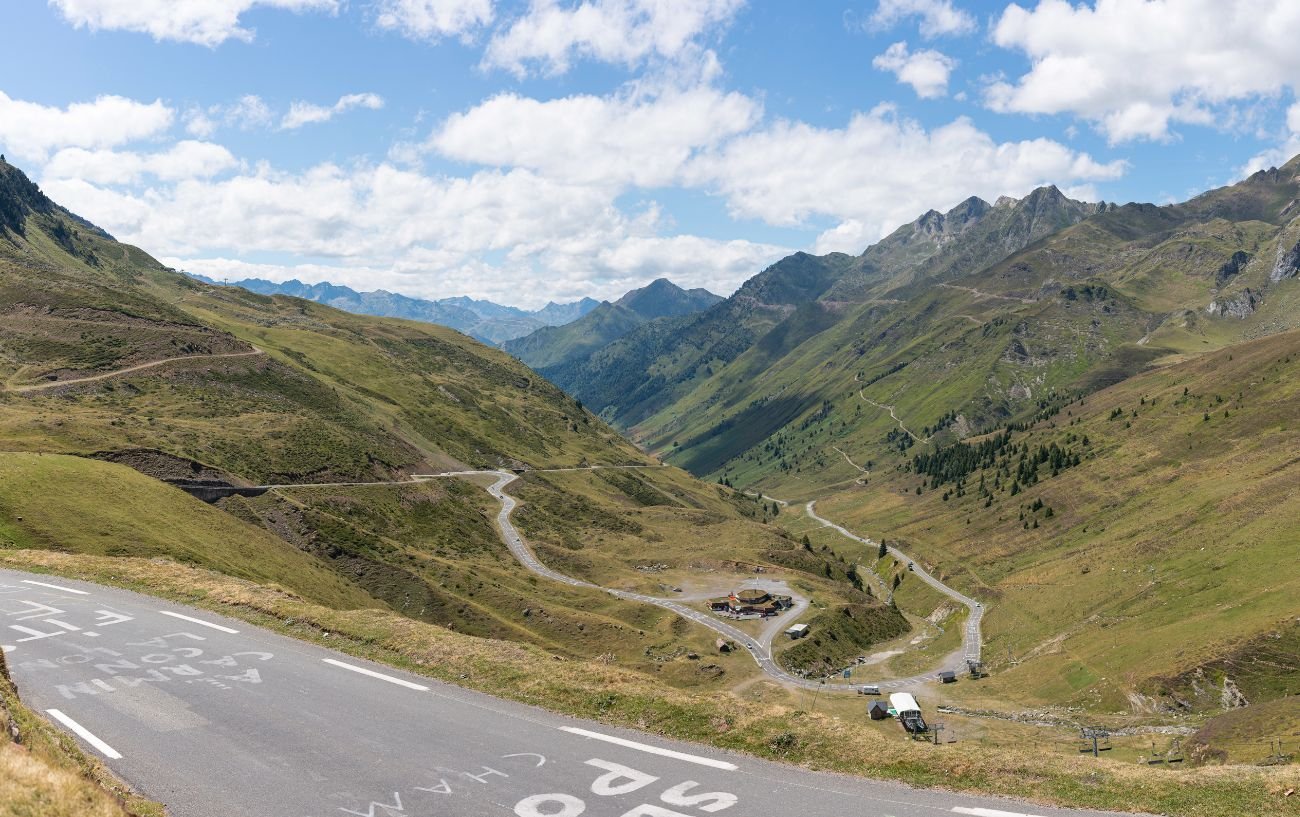
- Category: HC
- Distance: 19.8 km
- Elevation Gain: 1406 m
- Max Altitude: 2110 m
- Average Gradient: 7.0%
- Max Gradient: 12.7%
Okay, so we may have said that the famous Grand Tour climbs can oftentimes be dwarfed by the climbs in, for example, the high Andes or the Himalayas, but there are exceptions.
Although not quite as much elevation gain or distance, the Tourmalet cannot be left out of any list of the toughest climbs in the world. The Col du Tourmalet is the single most iconic climb in the history of bike racing.
The stats of the Tourmalet aren’t quite as brutal as many of the others on the list, but again, there are a variety of factors that add to the difficulty of the climb.
One such factor is the heat and lack of cover on the climb, meaning severe dehydration is a definite risk when climbing the Tourmalet.
Additionally, when we see the pros climbing the Tourmalet in the Tour de France, they are ascending at an incredible speed, which is why we often tend to see even some of the strongest climbers crack on the climb.
When climbing the Tourmalet as an amateur, having witnessed such strong riders blow their doors on the climb, there is an additional psychological difficulty that may impact your confidence for the climb.
- Thinking about giving the Tourmalet a go? Check out Col Du Tourmalet: Cyclist’s Guide To A Legendary Climb here!
Passo Dello Stelvio, Italy
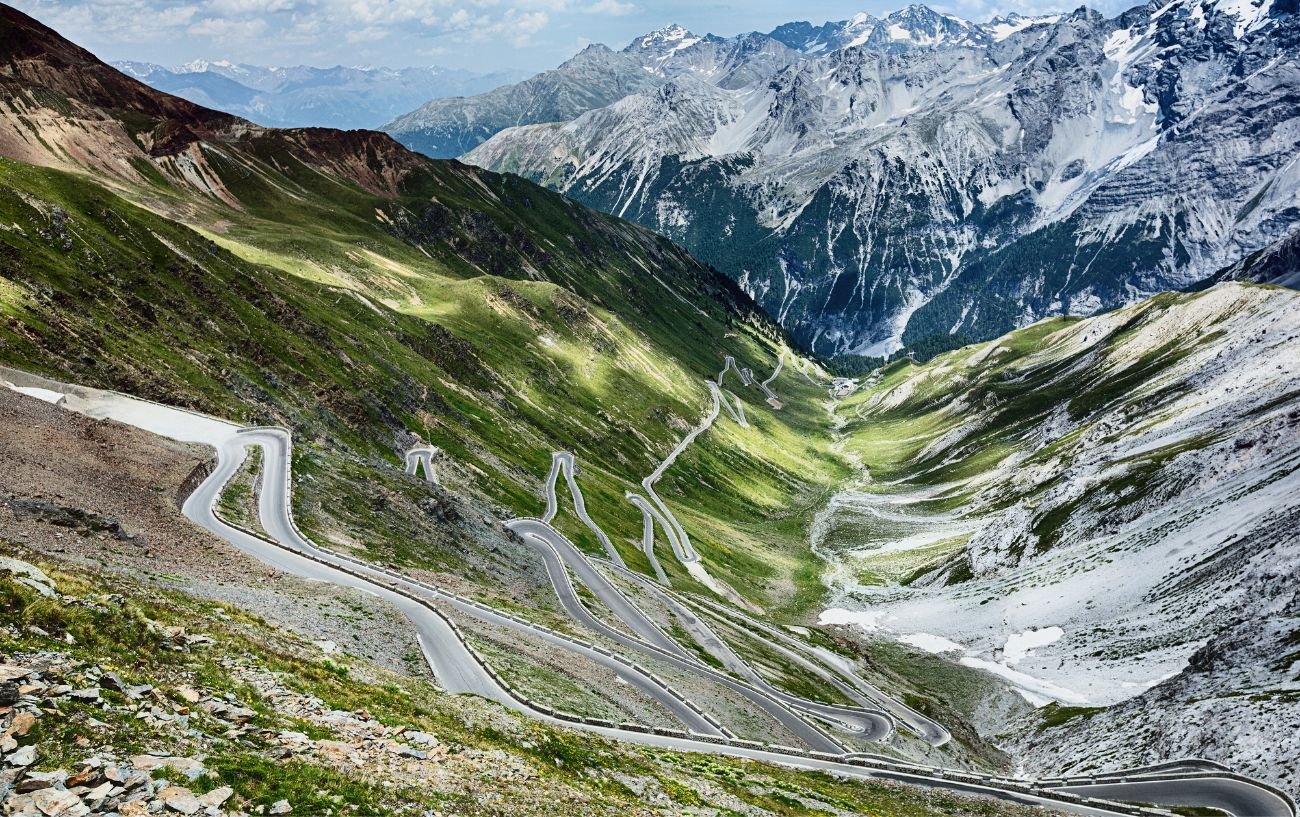
- Category: HC
- Distance: 24.5 km
- Elevation Gain: 2057 m
- Max Altitude: 2758 m
- Average Gradient: 7.5%
- Max Gradient: 34.2%
The Passo dello Stelvio is another brutal alpine climb that you’re likely to see in the Grand Tours. It is commonly referred to as the toughest climb in the Giro d’Italia, which, considering the topography of Italy, is really saying something.
The climb is renowned for its difficulty, and it is actually higher, steeper, longer, and has more elevation gain than the legendary Col du Tourmalet.
The maximum gradient of 34.2% is enough to make you sweat behind the knees just reading it, but when you consider that you’ll be taking on those slopes at an altitude of over 2758 m, it’s even more terrifying.
- If you’re bold enough to take on the Stelvio, check out Stelvio Pass: Ultimate Cyclist’s Guide!
Babusar Pass, Pakistan
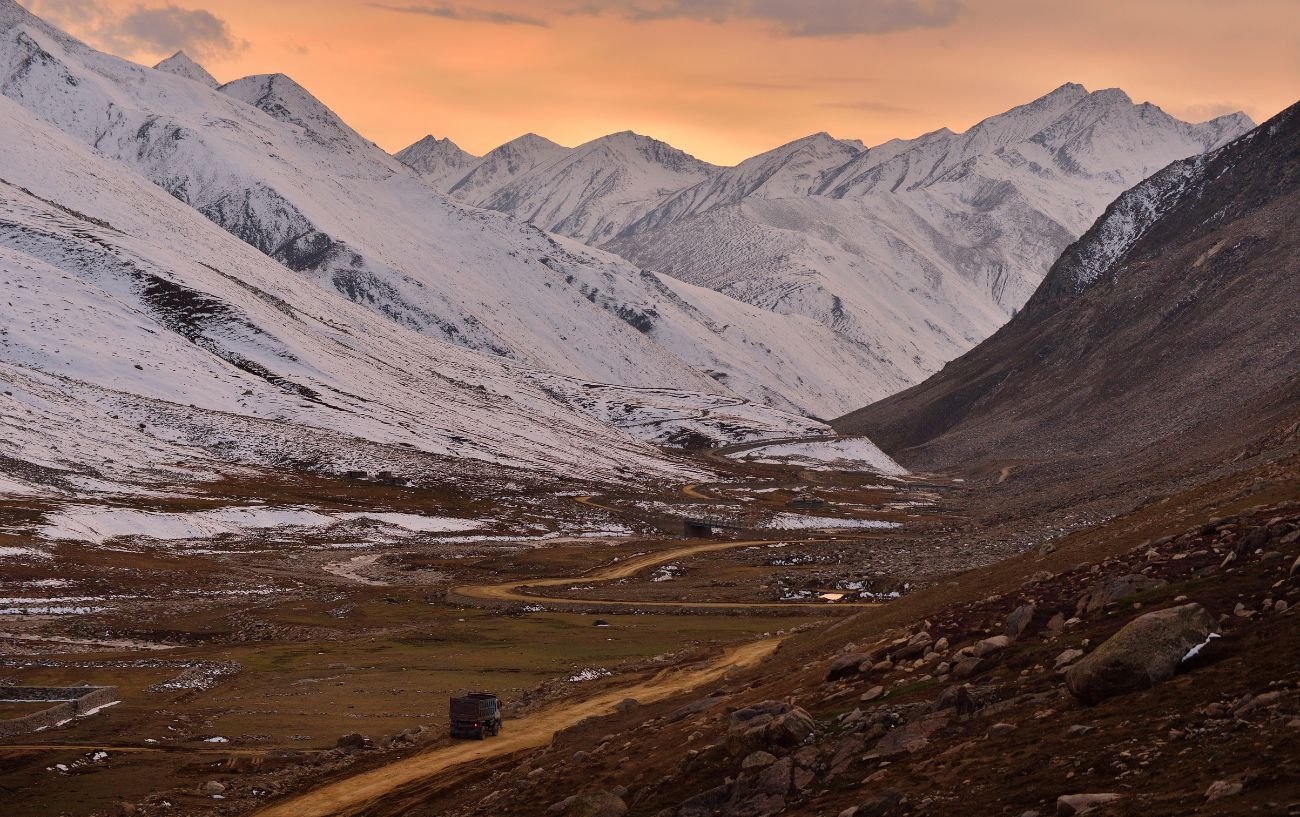
- Category: HC
- Distance: 41.8 km
- Elevation Gain: 3154 m
- Max Altitude: 4170 m
- Average Gradient: 7.5%
- Max Gradient: 23.0%
The Babusar Pass in Pakistan is perhaps not quite as well known as many of the other climbs on this list, but it is equal to any of them in both scenery and difficulty.
Perhaps one of the reasons that it isn’t quite as popular a climb is that it is located in the region of Kashmir, and although it is technically not in the disputed territory, it remains very close to an active warzone.
However, the climb is undoubtedly incredible. Starting in the swelteringly hot and barren area of Chilas, it climbs its way up the mountain passing rivers and entering into lush green valleys, before returning to a barren landscape at over 4000 m.
4000 m is often a “cut-off” at which many hikers begin to experience altitude sickness, without proper acclimatization. In addition, due to the relative intensities of the sports, this “cut-off” is likely to be lower when on a bike.
It is important to exercise caution when attempting such a high climb, and if you begin to experience symptoms such as a terrible headache, nausea, severe breathing difficulties, and dizziness, then head back down straight away and descend as far as you can.
The same goes for all of the other high-altitude climbs on the list.
Mauna Kea, USA
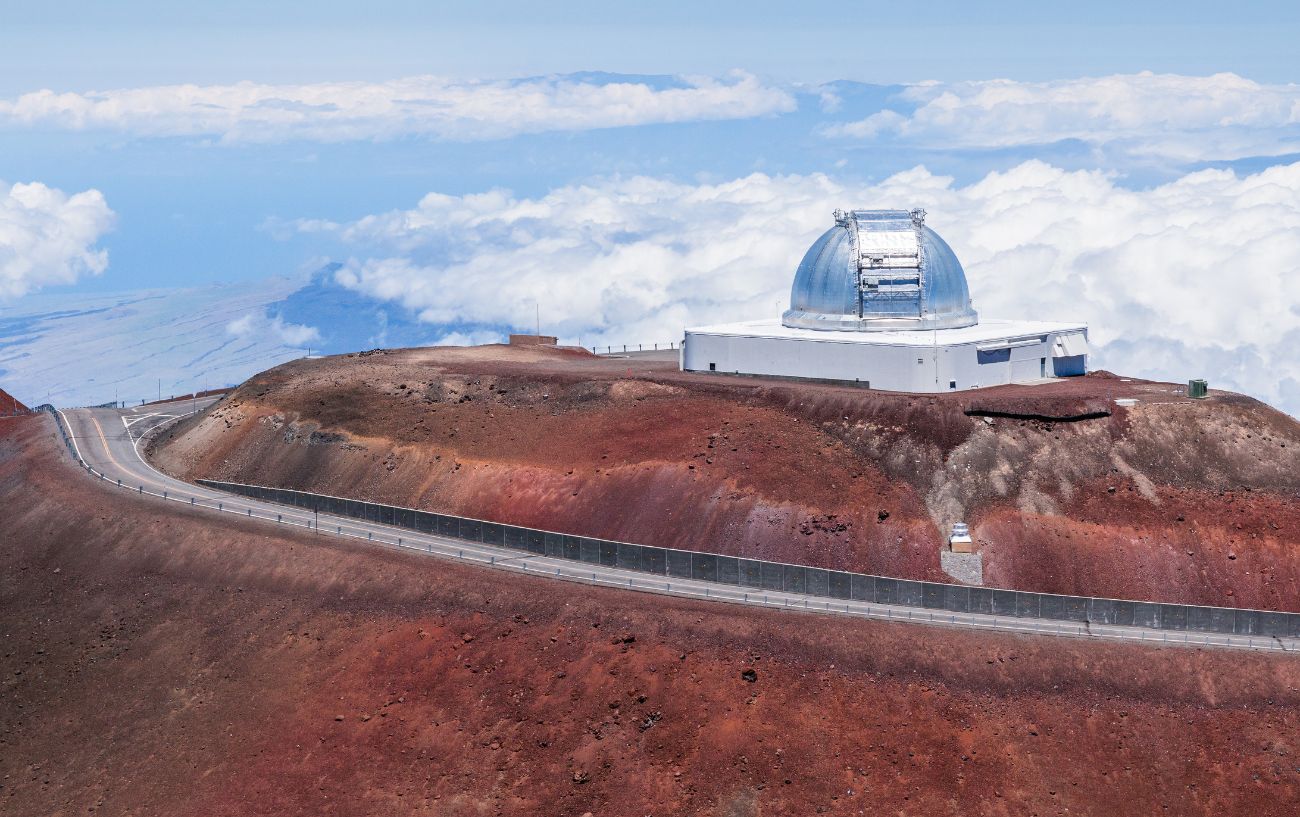
- Category: HC
- Distance: 67.7 km
- Elevation Gain: 4018 m
- Max Altitude: 4025 m
- Average Gradient: 5.9%
- Max Gradient: 23.3%
Often referred to as the toughest climb on the planet, the Hawaiian volcanic giant Mauna Kea is not for the faint-hearted.
Due to it being a volcano, there is essentially no respite whatsoever. Beginning at sea level, the climb is constantly ascending, and over the course of 67.7 km, you’ll ascend over 4000 m.
The volcano is actually the second-highest point in the whole of Hawai’i, so climbing it on a bike is likely to give a real sense of achievement!
One of the benefits of Mauna Kea is that the road quality is actually very good – even in the sections of the highest altitude.
However, once again, by virtue of its length, gradient, altitude, and elevation gain, it really is extremely challenging, and as previously stated, you should always ride cautiously when gaining such significant elevation.
La Muerte, Ecuador
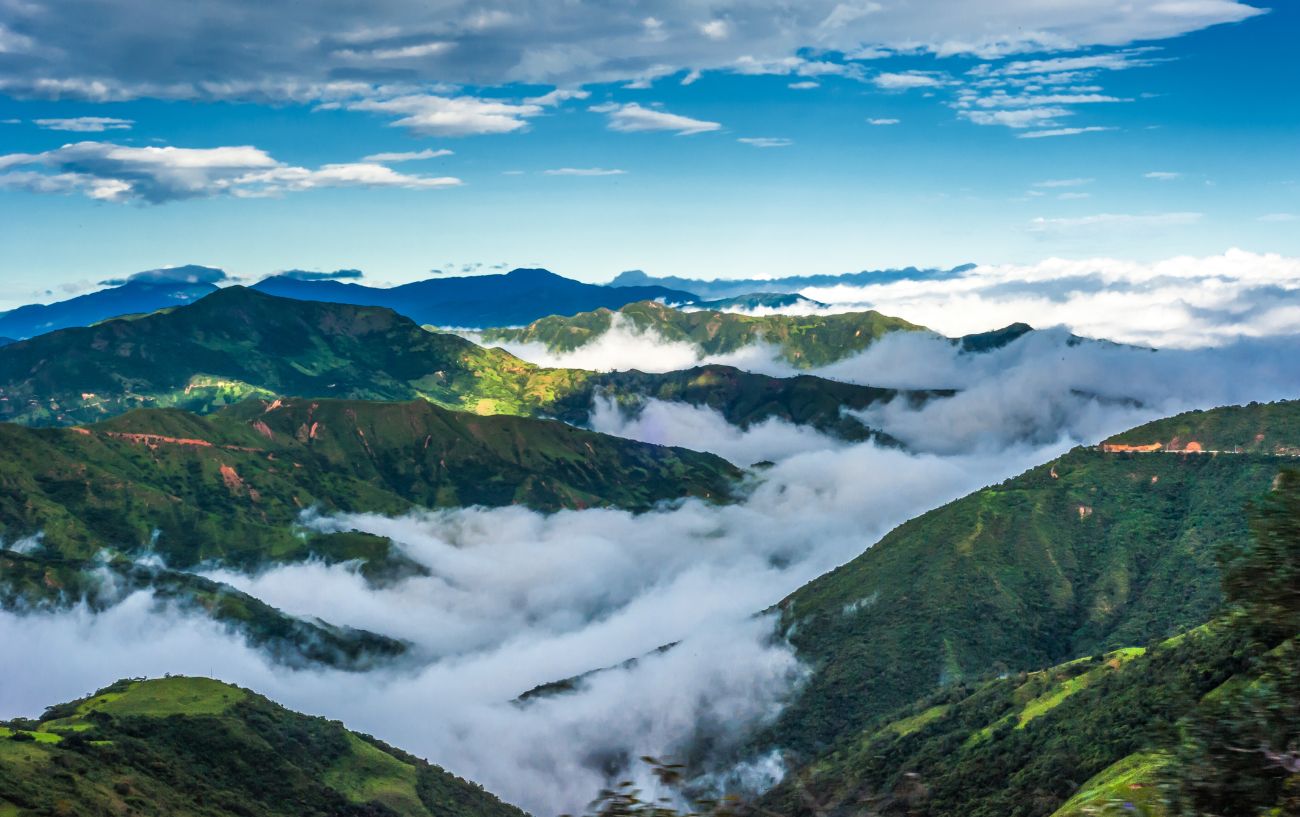
- Category: HC
- Distance: 71.0 km
- Elevation Gain: 4180 m
- Max Altitude: 3966 m
- Average Gradient: 5.2%
- Max Gradient: 15.0%
La Muerte – literally called “Death” in Spanish – is one of the most feared climbs on the planet.
Beginning in the lowland jungle of the coastal Guayaquil region, the climb embarks on a journey up into the high Andes in the Cuenca region. Once again, as you make the climb, you’ll be treated to a wide variety of biomes and landscapes, by virtue of the altitude change.
Despite the terrifying name, the climb is perhaps more gradual and potentially even safer than the likes of the Babusar Pass or Ticlio. Since you ascend the mountain more gradually, even with some descents, you may acclimatize a little better before reaching the summit.
Although, that’s not to diminish the fact that the summit sits at nearly 4000 m, which of course remains a dangerous endeavor regardless.
Death Road, Bolivia
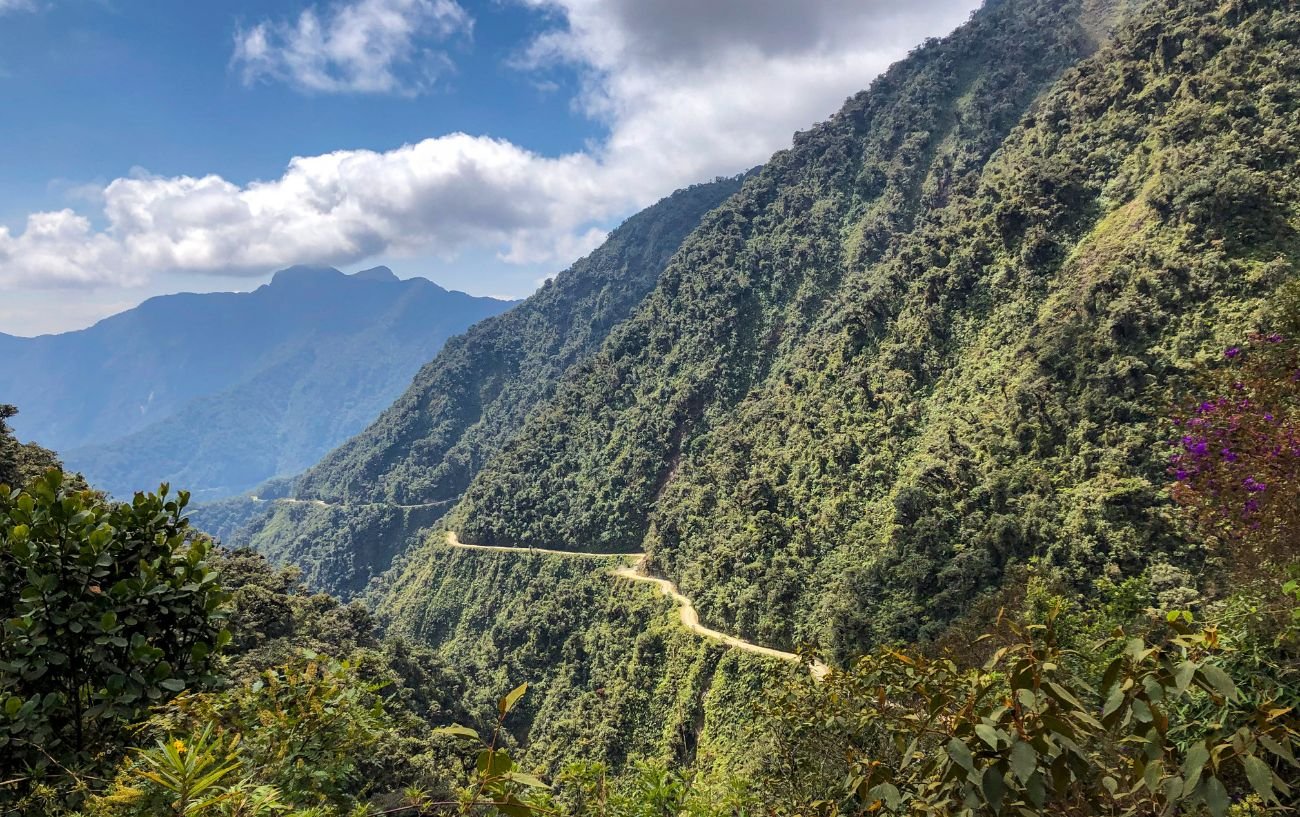
- Category: HC
- Distance: 62.3 km
- Elevation Gain: 3543 m
- Max Altitude: 4629 m
- Average Gradient: 5.5%
- Max Gradient: 30.6%
Death Road in Bolivia is one of the more well-known climbs in South America. However, it is more frequently discussed as a descent.
It is actually one of the most cycled roads on the continent, attracting over 25,000 tourists per year, often as part of a day-long excursion wherein travelers are dropped at the top with mountain bikes and embark on the 3500 m descent.
Though the name is definitely intimidating – it actually refers to the fact that when the road was open to buses, it was renowned for having the most deaths of any road in the world due to the vast drops off the unprotected sides of the trail.
Now closed to motor vehicles, however, it is much safer, and while it’s still necessary to exercise caution, you’re very unlikely to die on the road.
Although more commonly descended by visitors, the ascent is one of the most beautiful and challenging in the world. With over 3500 m of elevation gain over 62.3 km – almost entirely off-road – it’s really for those who want to test their physical limits.
One of the better things about the climb, however, is that it’s unpaved and has restricted passage, you won’t come across any cars, which is always a benefit when you’re on a bike.



